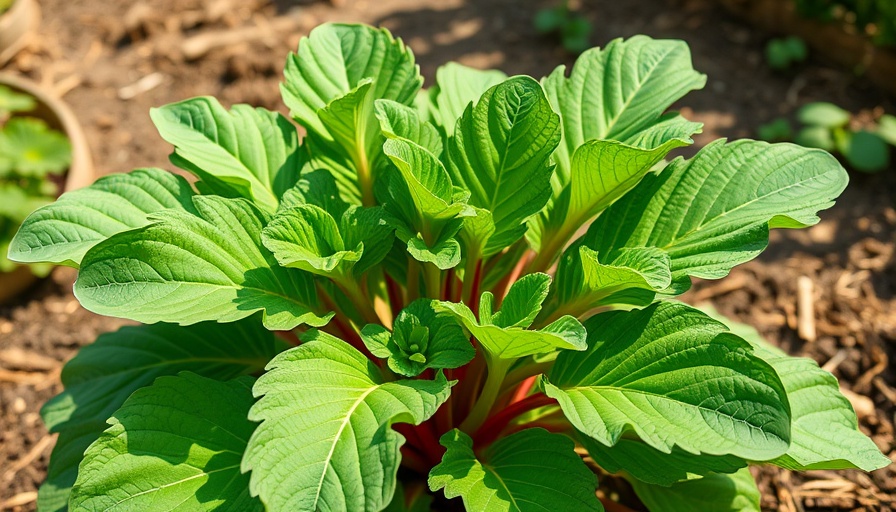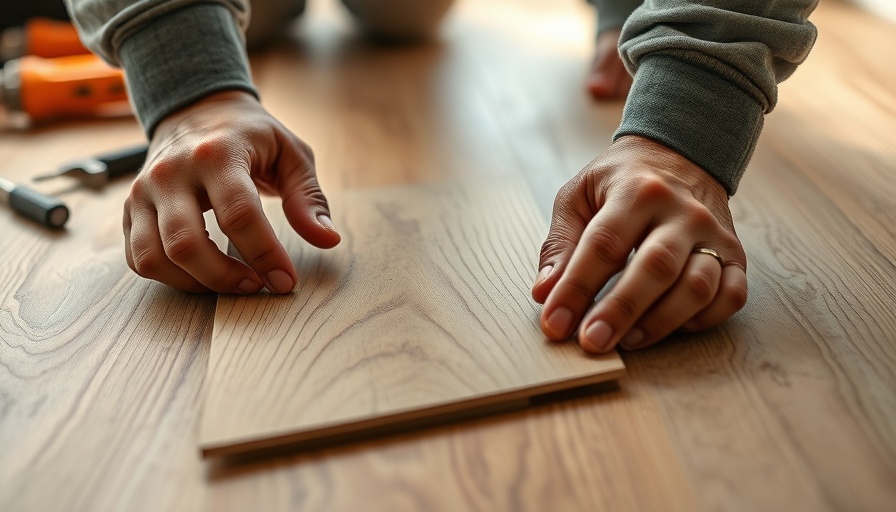
A Gardener's Delight: The Simple Joy of Harvesting Rhubarb
Rhubarb is unique in that it combines utility with beauty, showcasing large leaves and vibrant stalks that can enhance any garden. Once planted, this perennial plant can yield a rich harvest for over a decade, making it a popular choice for homeowners passionate about gardening. From sweet pies to tart sauces, rhubarb's versatility in the kitchen is as impressive as its aesthetic appeal. But how exactly do you harvest rhubarb to ensure it thrives year after year? With proper care and harvesting techniques, you can enjoy this delightful plant.
Understanding the Harvesting Timeline
Knowing when to harvest rhubarb is crucial for both the plant's well-being and the quality of what you gather. Experts such as agricultural specialist Laura Irish-Hanson from the University of Minnesota Extension emphasize patience when it comes to harvesting this unique vegetable. "If you planted your rhubarb within the last two years, hold off on harvesting until it reaches its third year," she advises. This timeframe allows the rhubarb to establish its root system and store energy, making for a healthier harvest in the long run.
In the third year, you’ll know it's time to pick the stalks when the leaves reach their full size, roughly 18 to 24 inches wide. While the color and length can vary between varieties—ranging from deep red to speckled green—the most crucial indicator is firmness. Always opt for stalks that are solid and healthy.
The Art of Harvesting Rhubarb the Right Way
For best practices, never use tools like knives or pruners to harvest rhubarb; instead, employ your hands. Laura recommends gripping the stalk near its base and twisting it gently to detach it from the crown. This method minimizes damage and avoids leaving an open wound that could invite pests or disease. After pulling the stalk, cut off the leaf immediately as it contains toxic compounds. The discarded leaves can safely go into compost, enriching your soil in the future.
It’s also essential to leave approximately 50% of your rhubarb plant undisturbed each season. This ensures that it remains healthy and capable of producing again next year. Harvesting too much can lead to weak plants that struggle to thrive.
Common Mistakes and Helpful Tips
To get the most out of your rhubarb harvest, it's vital to be aware of common pitfalls. First and foremost, don't harvest in the summer months. The growing season makes the stalks tougher, leading to less desirable texture and flavor. Sticking to spring for harvesting will ensure you gather the sweetest produce.
Furthermore, maintain consistency in fertilization. Rhubarb is a heavy feeder and requires nutrient support to grow robustly. Regularly add compost or well-balanced fertilizer to keep the soil nutrient-rich and promote healthy growth.
Rhubarb: A Plant with a Purpose
The decision to grow and harvest rhubarb goes beyond as an endeavor in gardening; it's about fostering a lifestyle connected with nature. Homeowners passionate about sustainable living can harness rhubarb’s benefits by making their gardens eco-friendly and productive. By following correct harvesting techniques, you not only reap the benefits of delicious harvests but also contribute positively to your garden's ecosystem.
Embracing the Rhubarb Craze in Your Home
As you consider adding rhubarb to your garden, think about its various culinary uses. Whether in pies, jams, or savory dishes, rhubarb charm extends well past the garden gate. Each harvest offers an opportunity for healthy meals and memorable moments with friends and family around the table.
Given its ease in maintenance and rich rewards, rhubarb is indeed a symbol of sustainability and healthy living. By nurturing this plant and mastering the art of harvesting, you'll not only enhance your garden's beauty but also enrich your lifestyle.
Join the Rhubarb Harvest Movement!
Don’t just read about the joy of rhubarb; start your own harvest journey today. Remember, your actions in growing and picking this fantastic plant can lead to delicious dishes and long-lasting satisfaction. So, grab some seeds or established plants, get your hands dirty, and dive into the joy of home gardening!
 Add Row
Add Row  Add
Add 




Write A Comment